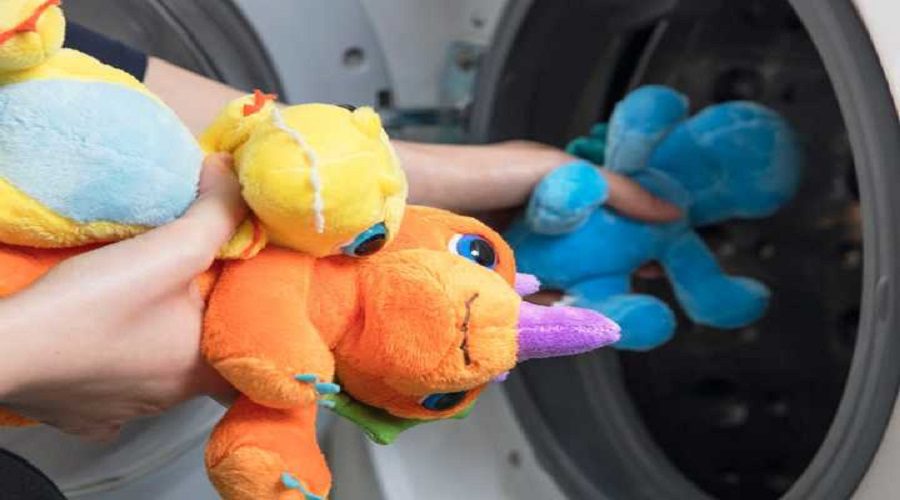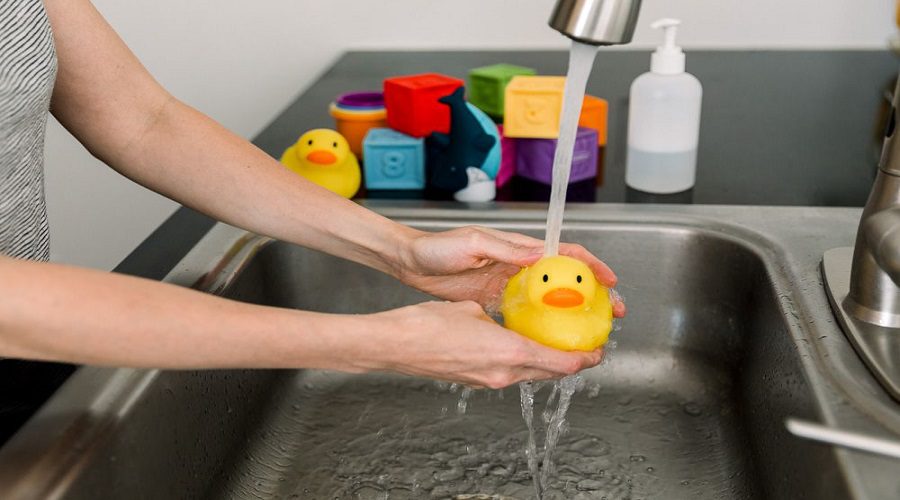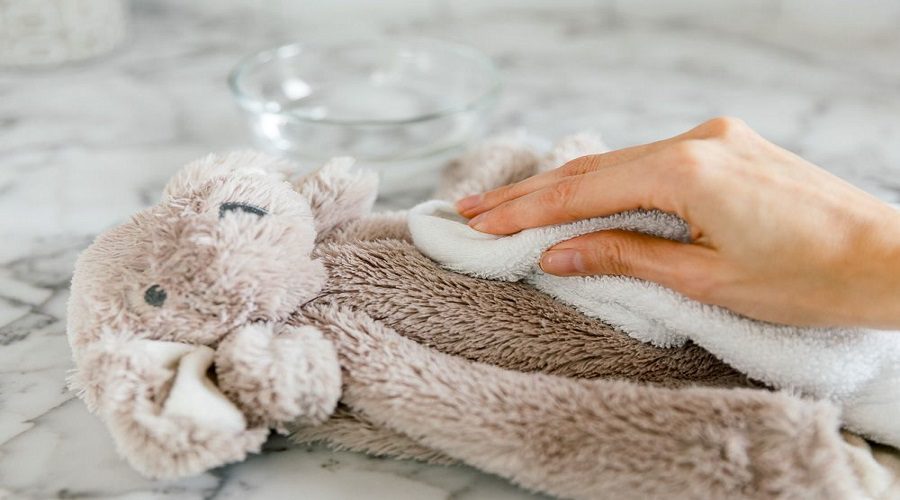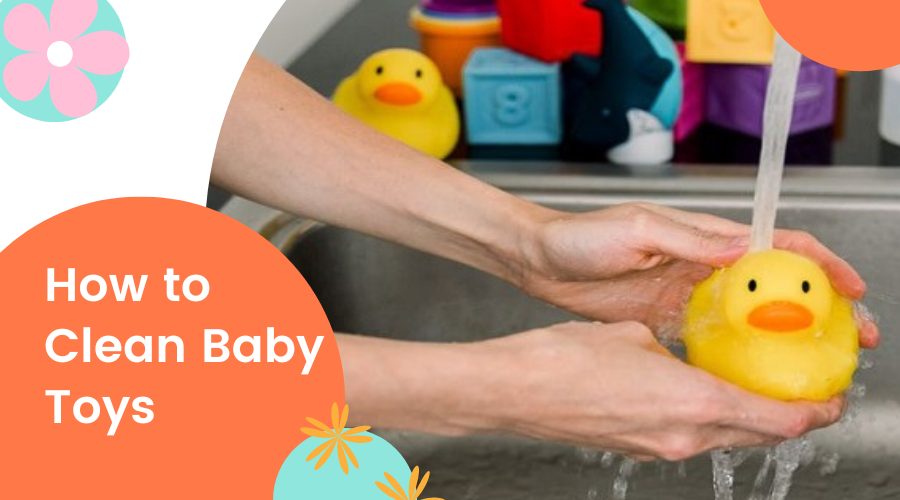- How do you clean baby toys at home?
- How Often Should You Clean Baby Toys?
- Cleaning vs. Disinfecting
- What Should You Use to Clean and Disinfect Baby Toys?
- How to Clean Plastic Toys
- Cleaning
- Disinfecting
- How to Clean Fabric and Plush Toys in the Washer?
- How to Clean Fabric Toys That Can’t Go in the Washer?
- How to Clean Wooden Toys?
- How to Clean Electronic Toys?
- Conclusions
When it comes to keeping your baby’s toys clean, there are a few simple steps that you can take. First, make sure that the toys are completely dry before storing them away. Second, use a toy cleaner to remove any stains or dirt. Finally, be sure to store the toys away in a place where they won’t be exposed to direct sunlight or extreme temperature changes.
Toys and play surfaces can be a vehicle for transmitting germs between babies, toddlers, and adults. While daycares and youth centers have specific guidelines for toy cleanliness, you can use simple home solutions to clean baby toys safely and effectively.
How do you clean baby toys at home?

Cleaning baby toys can be a daunting task, but it is important to do it regularly in order to keep them in good condition. Here are 8 tips for cleaning baby toys at home:
- Wipe down toys with a damp cloth.
- Remove stickers and excess fabric with a sharp knife or scissors.
- Soak toys in a solution of 1 cup of white vinegar mixed with 1 cup of water for 20 minutes. Rinse thoroughly and dry completely.
- Put toys in the dishwasher on the delicate cycle and use warm, soapy water to rinse off any residue.
- Clean hard surfaces such as walls and furniture using toy cleaner or a slightly damp cloth moistened with rubbing alcohol; let toy cleaner evaporate before storing toys away again.
How Often Should You Clean Baby Toys?

When it comes to keeping your baby’s toys clean, there is no one right answer. However, as a general rule of thumb, you should clean them every few days. Here are 8 easy tips for cleaning baby toys:
| Toy Type | Mouthed | Not Mouthed |
| Hard Plastic Toys | After each use | Weekly or if visibly soiled |
| Hard Plastic Toys with Batteries | After each use | Monthly or if visibly soiled |
| Bath Toys | After each use | After each use |
| Wooden Toys | Daily | Monthly or if visibly soiled |
| Fabric Toys | Daily | Weekly or if visibly soiled |
Cleaning vs. Disinfecting
Cleaning and disinfecting are not the same thing. Cleaning is the process of physically removing germs and dirt while disinfecting is the process of destroying or neutralizing viruses, bacteria, or other microorganisms. When caring for a baby’s toys, it is important to understand the difference between cleaning and disinfecting in order to keep your child safe.
To clean a toy, use soap and water. Be sure to rinse off all the soap before allowing the toy to dry. To disinfect a toy, you must first dilute 1 tablespoon of chlorine bleach in 1 gallon of water. Pour the solution into a spray bottle and mist the toy liberally. Let it sit for 30 minutes before rinsing it off with clean water.
What Should You Use to Clean and Disinfect Baby Toys?

When it comes to cleaning baby toys, there are a few things that you should always use. Method One: Fill a pot with 1 cup of white vinegar and 1 cup of water. Place the toy in the pot and let it soak for 30 minutes. After 30 minutes, take the toy out and rinse it off with cold water. Pour a pot of boiling water onto your toy and let it sit for one minute before taking it out and rinsing it off again. Method Two: Fill a spray bottle with hydrogen peroxide (3% or 4%). Spray the toy liberally, being sure to cover all of the surface areas. Let the toy sit for 10-15 minutes before rinsing it off with cold water. Method Three: Put 2 tsp baking soda into a bowl or baggie.
How to Clean Plastic Toys
The child is constantly putting their baby toys in their mouth, it’s time to take action. Cleaning the toys regularly will help prevent them from becoming dirty and potentially harmful. Here are some tips on how to clean plastic baby toys:
Cleaning
- Remove visible dirt with a baby wipe.
- Wipe the baby toys with a cloth dipped in a mixture of warm water and dish soap.
- Put dishwasher-safe baby toys in the top rack on a normal cycle.
Disinfecting
- Start by rinsing the toy in cold water. Make sure to do this before each use.
- Use a soft cloth or sponge to gently clean the toy. Avoid using harsh chemicals or scrubbing the toy too hard, as this may damage it.
- Dry the toy off completely before storing it away. This will help prevent damage from moisture and dust accumulation over time.
- Keep your baby’s toys organized and easily accessible so you can take care of them as needed!
How to Clean Fabric and Plush Toys in the Washer?
Fabric and plush toys can be a source of embarrassment for parents if left unwashed in the washer. Here are instructions on how to clean fabric and plush toys in the washing machine:
- Locate the toy in the washing machine and remove it from its packaging. Gently shake off any excess water or particles that may have accumulated on the toy since it was last used.
- Place the toy inside one of the laundry containers that came with your machine, making sure that all edges of the toy are touching the container’s walls. Check to make sure that all fabric parts of the toy are contained within its boundaries.
- Select your wash cycle and add an appropriate amount of detergent to the load (check your machine’s manual for specifics).
How to Clean Fabric Toys That Can’t Go in the Washer?

There are a few ways to clean fabric toys that can’t go in the washer. If the toy is made out of cloth, you can hand-wash it in cold water with a little soap. You can also put it in the dryer on medium heat for 10 minutes. If the toy is made out of rubber, vinyl, or plastic, you will need to clean it using a cleaning product specifically designed for fabric toys. Some examples of these products are dubbed “fabric softeners.
How to Clean Wooden Toys?
When it comes to cleaning baby toys, there are a few important things to keep in mind. The first is that the toys should be kept out of the reach of small children. Additionally, it’s important to remember that wooden toys can get dirty quickly and need to be cleaned regularly in order to keep them looking new. Here are a few tips for cleaning baby toys:
-First, it’s important to wash the toy thoroughly with warm water and soap. Make sure to rinse it off completely before putting it away.
-If the toy is made from wood, try using a natural wood cleaner like olive oil or coconut oil. These cleaners will help keep the wood looking shiny and new.
-If the toy is made from plastic, you can use a gentle household cleaner like 409 or washing up liquid.
How to Clean Electronic Toys?

Toys are a big part of childhood, and parents love giving them to their children. But as kids grow, so do their toys. And with all the different types of toys out there, it can be hard to keep them clean. Fortunately, cleaning toys is easy with a little preparation and some common household supplies. Here are 8 tips for cleaning electronic toys:
1) Make a cleaning kit: Include a damp cloth, toy cleaner, and soft brush for general clean-up.
2) Wipe down the toys: Use a cloth to wipe down the surface of the toy. Make sure to get into all the crevices and corners.
3) Clean off dirt and dust: use a toy cleaner to remove any dirt or dust. Be sure to get in between the toy’s parts as well.
Conclusions
In conclusion, we recommend that you take the time to properly clean your baby’s toys every time they’re played with. This will help prevent any potential health hazards and ensure that the toys are in good working order for your child. Follow these simple steps to get started . Wipe down each toy with a clean, dry cloth. If the toy has removable parts, place them in a bowl of hot water and soap. Swish the parts around until they’re clean.

